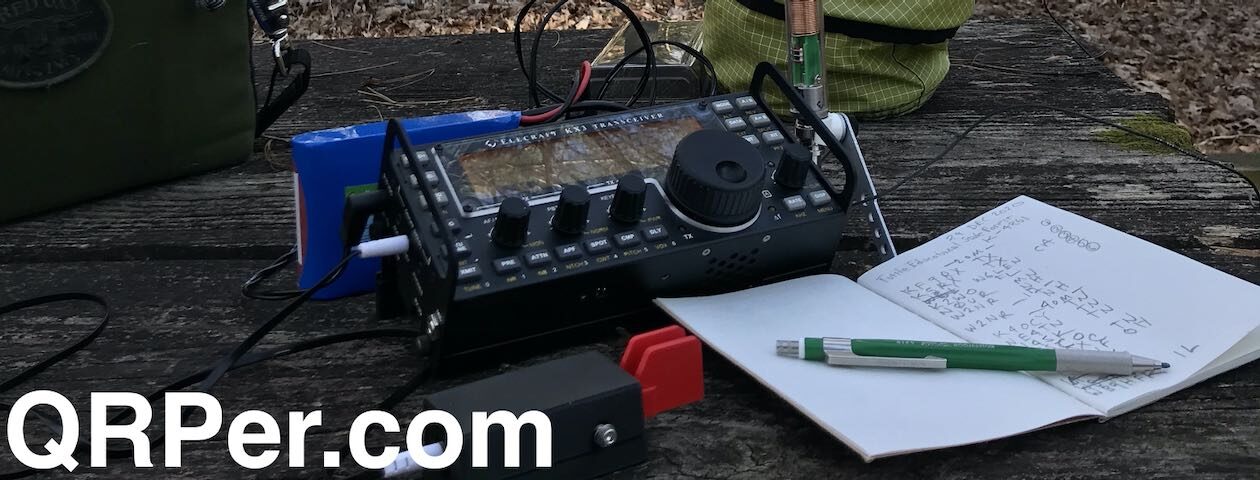by Vince (VE6LK)
It seemed easy enough on paper. Famous last words, right?
It’s a leap year in 2024 and how many chances will I ever get to activate on February 29th, at least that was the reason for the multi-entity rove. That and the fact I hadn’t been up close to the mountains in at least a month despite living in close proximity.
The day before departure for #POTAThon240229 my heart sank when I saw the forecast of 4-8″ of snow. I’d already done my planning and secured most of the day off work. The plan was bold, including 3 National Parks and 2 National Heritage Areas in two provinces and would take about 9 hours to execute from end to end. I was also badly in need of some mountain therapy as it had been a couple of months since I’d been close-up to the Canadian Rockies. I went to bed not hopeful for the next day but kept an open (hopeful?) mind.
The next morning, the forecast had changed drastically and the snowfall had been cut in half; 2 to 4″ of snow is pretty normal this time of year and that means the roads are usually no problem, and yes that is a foreshadowing .. The route planned was to go out along the Trans-Canada Highway to Field, British Columbia, and work my way back towards home with stops along the way. A simple out-and-back as it were.
I hit the road and aimed the F-350 for Yoho National Park in Field B.C. where I snapped the photo below. Two-thirds of the way there, the roads turned terrible, and a two or three lane road was open with only a single lane. Whiteouts happened on and off and travel was Sierra Lima Oscar Whiskey, to say the least.
Pottymouth made some short inward appearances, mostly exclamations about my lack of luck. With conditions like this, the basic rules are to take your time and allow twice the following distance you think you need. “Why not turn around?” you ask? Because I was already two-thirds of the way to the endpoint, thus deeply invested in the travel and I figured it would not get much worse.

It didn’t get much worse, and arriving at the Field Visitor Centre, I was parked within 100′ of the Kicking Horse River National Heritage Area by being in the parking lot pictured above. In the summer months, this lot is jammed with cars and the view is stunning as you are in a narrow valley with a small town across the fast-moving river. It appears that the 2-4″ of fresh snow was more like 8″ as the parking lot had not yet been plowed and it was up past the chest of Red Wrangler the Shiba Inu.

The parking lot is at ~1225m (4045′) Above Sea Level and the mountains nearby are ~2400m (7920′) and are just about right beside the road. The narrow valley runs Northeast to Southwest so it for certain affects takeoff angles on any antenna. Given the temperatures were plus or minus the freezing point, I opted to stay in the cab of the truck for the day. I completed my activation 25 minutes later and started driving. At this point I’m close to 2 hours behind plan and I made the choice to visit Lake Louise and do a food stop, but not to activate.

If you are wondering what Lake Louise looks like without 2′ of fresh snow, you can do that here with Google Street View. Even though I was behind plan, it was a must-do visit in order to refresh my soul and get some fresh mountain air. Mister Dog and I made a quick trip to the lake’s edge and back to the truck to continue along with our day, as even if I had the time, I did not bring snow-clearing equipment -like a front-end loader- to clear off a park bench to set up!
About 45 minutes later, I crossed over the fifth mountain pass of the day and ended up in Kootenay National Park (CA-0045) at the Alberta/BC border on Highway 93. It’s a geographically unique spot as it is also at the Continental Divide. It was the third point of the Continental Divide I’d cross during the trip. At least by now the snow has stopped falling.

Once again, I arrived to a fresh 8″ of snow in the unplowed parking lot and Wrangler was most pleased to cavort about and stretch his legs. At this point, I was surrounded by ~3100m and ~2600m mountains while sitting at ~1631m ASL. Again, a narrow valley with rocks on either side of me and, thanks to low-hanging clouds, I couldn’t see much of them at all, sigh.
I’ve travelled up and down this valley before so I know that, as long as I’m not right next to the rocks, my signal will be heard someplace. I’d learned first-hand just how much close proximity to the side of a mountain can impair your signal during my trip to Montana’s Glacier National Park last August. The noise floor and signals will drop out as you drive along beside the rocks and then comes back up as you move away from them even by 50′ or so. Continue reading Leap Year Day report from the Great White North











